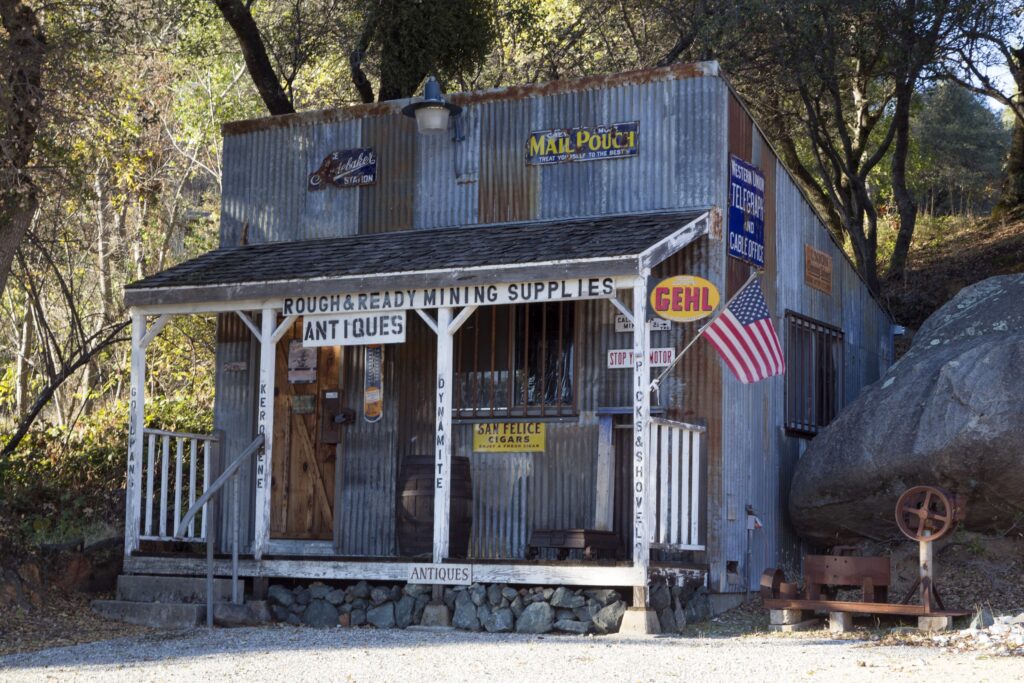Is there anything that quite embodies the pioneering spirit of the United States better than the Gold Rush? In 1848, gold was found in the Sacramento Valley, beginning a series of events in which hundreds of thousands of prospectors and fortune-seekers would flock to the “Wild West” over the next several years in search of profit. The event would shape California whose towns and cities are built atop the incredible stories of these so-called “forty-niners.” Many of Northern California’s smaller towns were established during this Gold Rush and owe their topography, as well as their very existence, to this event. (1)
Rough and Ready, California is one such small town.
More Forgotten US History: Franklin: The U.S. State That Never Was
Rough and Ready, California
As of 2010, census data indicated that the population of Rough and Ready sat at just below one thousand residents. Rough and Ready, California often appears on lists of the weirdest place names in the world, made even weirder by the fact that the town has streets with names like “To Hell and Back Lane” and “King Arthur Court.” With an area of only a few square miles, Rough and Ready remains, in shape and in spirit, very much the little Gold Rush town it has always been.

Rough and Ready, California was established in 1849 by the Rough and Ready Mining Company of Wisconsin. The town is named after this company which, itself, was named for General Zachary Taylor, who would become president in March of 1849, and whose nickname was “Old Rough and Ready.” (2)
More California History: The Legend of Black Bart
The Great Republic of Rough and Ready
A state or region declaring its secession from the United States has occurred a number of times in US history, most notably during the American Civil War. Perhaps no secession has been so frivolous or so short-lived as that of the Great Republic of Rough and Ready. Tired of paying federal taxes for mining activities and brimming with the spunky independent spirit which was so characteristic of the Wild West, the people of Rough and Ready attempted to secede from the Union on the seventh of April, 1850. A popular local veteran of the Mexican War by the name of Colonel E.F. Brundage was elected president, and paperwork was sent to Washington, DC indicating Rough and Ready’s desire for independence. (3)
Shockingly, this attempt at secession sort of worked. Perhaps because the United States government did not take the little town’s declaration seriously, nobody ever actually intervened and the Great Republic of Rough and Ready was allowed to go on unchecked for a little while.
More Weird US History: An American Mummy: The John Wilkes Booth Conspiracy
The Fall of the Great Republic of Rough and Ready
Of course, all things must come to an end. For the Great Republic of Rough and Ready, this end would come just three months after the “republic” had been founded. Local legend dictates the end of Rough and Ready as follows:
In the beginning of July in 1850, the people of the Great Republic of Rough and Ready began organizing their Fourth of July celebration. Although this was ostensibly a celebration of the independence of a nation to which they no longer belonged, the citizens of Rough and Ready were nonetheless excited to eat, drink, and be merry on Independence Day. Their excitement was brought to a screeching halt, however, when citizens from Rough and Ready went into nearby Nevada City, California in order to purchase alcohol for the upcoming party. The would-be merry-makers were told that the shops would not sell their wares to foreigners. (4)
On that very day, so the story goes, the citizens of Rough and Ready held a vote and agreed to rejoin the Union. Unwilling to give up their July 4th celebration, Rough and Ready rejoined the United States with little fanfare, just in time for the party. The Great Republic of Rough and Ready, which had formed just three months earlier, was no more. (5)
To this day, the republic is celebrated by locals during the “Secession Days” festivities. The town is now a designated California Historical Landmark.
More Strange California History: The Salton Sea: How a Desert Resort Became an Abandoned Wasteland